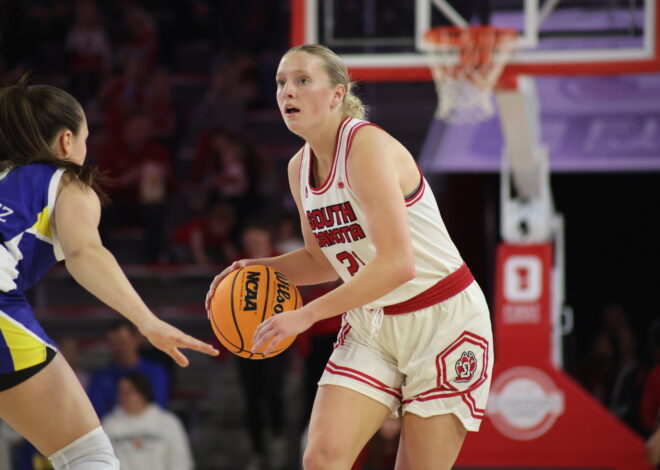
Column: Cutting of college swimming programs frustrating, heartbreaking
It’s no secret that swimming isn’t a popular sporting event. Ever since I started swimming at the age of eight, swim meet crowds consisted of close friends and family.
Now that I’m in college and swimming for a Division I university, I’m confident when I say that this hasn’t changed at all – although I had hoped otherwise.
It’s rare that we receive any sort of attention from anyone, but at this moment in time, not much of us care about our popularity.
At least we get to swim.
Last week, news spread that the University of North Dakota was cutting its men’s and women’s swimming and diving teams. We compete against UND at least twice a year, and with the school recently announcing their move to the Summit League, the decision to cut both teams will have a direct impact on us and other teams within the league.
UND isn’t the only school facing cuts. The University at Buffalo just announced the cutting of their men’s team, but the recent surge of cuts isn’t a new phenomenon.
Since 1993, more than 35 college swimming programs have been cut. This is likely due to the fact that swimming is often one of the first sports to go when athletic programs look to reduce spending costs.
Swimming is an expensive sport to maintain, and while many in the swimming community understand these decisions, it doesn’t make program cuts any less frustrating or heartbreaking.
Usually, the first reason behind an athletic department’s decision to cut a team involves finances.
Swimming is by no means a revenue-generating athletic team. But then again, neither are many college sports.
While the sport of swimming may not draw in thousands of spectators, that doesn’t mean a program is unsuccessful or unimportant. UND has produced NCAA national swimmers and Olympic Trial qualifiers for years.
The effect on athletes
On a larger scale, the United States has proven to be the best in the sport of swimming. This isn’t even arguable.
Over the years, Olympic swimmers have earned 553 of the 800 total medals earned by the United States, 421 medals more than the next sport.
Swimming is by far the most successful sport in America in terms of the Olympics, and many of those Olympians started out with college swimming careers. Many recent Olympic participants, like Katie Ledecky and Caeleb Dressel, are still in college.
College athletics provides some of the best training available, and the idea that college swimming is starting to fade away is sad for all of those that enjoy the sport. The NCAA Championship is arguably the second fastest meet in the world, only after the US Olympic Trials.
And while the bigger schools that are producing these Olympians aren’t the ones getting cut right now, if this trend continues, it’s only a matter of time before college swimming will be a thing of the past.
Aside from the bigger picture, think about the mental state of student-athletes who just received notice that their university is cutting their sport. For most of these athletes, their decision to attend a university was largely based upon the athletic programs provided, and has been predetermined for months, in some cases, years.
For all those swimmers without a team, they now need to find a new college to swim for. This is a difficult task because most teams are full and have no more money left at this point.
And besides, with all the NCAA rules and regulations on transferring as an athlete, changing universities is tricky and is by no means a smooth process.
Some of these swimmers may never swim again, and that’s truly upsetting. Swimmers are hardworking and dedicated athletes, and they don’t deserve last-minute notifications of their programs being cut.
If a college decides to cut a program, the least they could do is give notice a year in advanced. Better yet, don’t cut a program that produces some of the best athletes, and people, in college athletics.

